1. Navasa M, Rodés J. Bacterial infections in cirrhosis. Liver Int. 2004; 24(4):277–280. PMID:
15287849.

2. Johnson DH, Cunha BA. Infections in cirrhosis. Infect Dis Clin North Am. 2001; 15(2):363–371. viiPMID:
11447700.

3. Navasa M, Rimola A, Rodés J. Bacterial infections in liver disease. Semin Liver Dis. 1997; 17(4):323–333. PMID:
9408968.

4. Runyon BA. Bacterial infections in patients with cirrhosis. J Hepatol. 1993; 18(3):271–272. PMID:
8228117.

5. Caly WR, Strauss E. A prospective study of bacterial infections in patients with cirrhosis. J Hepatol. 1993; 18(3):353–358. PMID:
8228129.

6. Cheruvattath R, Balan V. Infections in patients with end-stage liver disease. J Clin Gastroenterol. 2007; 41(4):403–411. PMID:
17413611.

7. Soriano G, Guarner C, Tomás A, Villanueva C, Torras X, González D, et al. Norfloxacin prevents bacterial infection in cirrhotics with gastrointestinal hemorrhage. Gastroenterology. 1992; 103(4):1267–1272. PMID:
1397884.

8. Tandon P, Garcia-Tsao G. Bacterial infections, sepsis, and multiorgan failure in cirrhosis. Semin Liver Dis. 2008; 28(1):26–42. PMID:
18293275.

9. Fernández J, Navasa M, Gómez J, Colmenero J, Vila J, Arroyo V, et al. Bacterial infections in cirrhosis: epidemiological changes with invasive procedures and norfloxacin prophylaxis. Hepatology. 2002; 35(1):140–148. PMID:
11786970.

10. Wiest R, Krag A, Gerbes A. Spontaneous bacterial peritonitis: recent guidelines and beyond. Gut. 2012; 61(2):297–310. PMID:
22147550.

11. Tandon P, Garcia-Tsao G. Renal dysfunction is the most important independent predictor of mortality in cirrhotic patients with spontaneous bacterial peritonitis. Clin Gastroenterol Hepatol. 2011; 9(3):260–265. PMID:
21145427.

12. Angus DC, van der Poll T. Severe sepsis and septic shock. N Engl J Med. 2013; 369(9):840–851. PMID:
23984731.

13. Salerno F, Gerbes A, Ginès P, Wong F, Arroyo V. Diagnosis, prevention and treatment of hepatorenal syndrome in cirrhosis. Gut. 2007; 56(9):1310–1318. PMID:
17389705.

14. Arroyo V, Ginès P, Gerbes AL, Dudley FJ, Gentilini P, Laffi G, et al. Definition and diagnostic criteria of refractory ascites and hepatorenal syndrome in cirrhosis. International Ascites Club. Hepatology. 1996; 23(1):164–176. PMID:
8550036.
15. Sanyal AJ, Boyer T, Garcia-Tsao G, Regenstein F, Rossaro L, Appenrodt B, et al. A randomized, prospective, double-blind, placebo-controlled trial of terlipressin for type 1 hepatorenal syndrome. Gastroenterology. 2008; 134(5):1360–1368. PMID:
18471513.

16. Levey AS, Bosch JP, Lewis JB, Greene T, Rogers N, Roth D. A more accurate method to estimate glomerular filtration rate from serum creatinine: a new prediction equation. Modification of Diet in Renal Disease Study Group. Ann Intern Med. 1999; 130(6):461–470. PMID:
10075613.
17. Levy MM, Fink MP, Marshall JC, Abraham E, Angus D, Cook D, et al. 2001 SCCM/ESICM/ACCP/ATS/SIS International Sepsis Definitions Conference. Crit Care Med. 2003; 31(4):1250–1256. PMID:
12682500.

18. Ariza X, Castellote J, Lora-Tamayo J, Girbau A, Salord S, Rota R, et al. Risk factors for resistance to ceftriaxone and its impact on mortality in community, healthcare and nosocomial spontaneous bacterial peritonitis. J Hepatol. 2012; 56(4):825–832. PMID:
22173153.

19. Llovet JM, Planas R, Morillas R, Quer JC, Cabré E, Boix J, et al. Short-term prognosis of cirrhotics with spontaneous bacterial peritonitis: multivariate study. Am J Gastroenterol. 1993; 88(3):388–392. PMID:
8438846.
20. Tsung PC, Ryu SH, Cha IH, Cho HW, Kim JN, Kim YS, et al. Predictive factors that influence the survival rates in liver cirrhosis patients with spontaneous bacterial peritonitis. Clin Mol Hepatol. 2013; 19(2):131–139. PMID:
23837137.

21. Wong F. Acute kidney injury in liver cirrhosis: new definition and application. Clin Mol Hepatol. 2016; 22(4):415–422. PMID:
27987536.

22. Schrier RW, Arroyo V, Bernardi M, Epstein M, Henriksen JH, Rodés J. Peripheral arterial vasodilation hypothesis: a proposal for the initiation of renal sodium and water retention in cirrhosis. Hepatology. 1988; 8(5):1151–1157. PMID:
2971015.

23. Moore K, Wendon J, Frazer M, Karani J, Williams R, Badr K. Plasma endothelin immunoreactivity in liver disease and the hepatorenal syndrome. N Engl J Med. 1992; 327(25):1774–1778. PMID:
1435931.

24. Sort P, Navasa M, Arroyo V, Aldeguer X, Planas R, Ruiz-del-Arbol L, et al. Effect of intravenous albumin on renal impairment and mortality in patients with cirrhosis and spontaneous bacterial peritonitis. N Engl J Med. 1999; 341(6):403–409. PMID:
10432325.

25. Song HG, Lee HC, Joo YH, Jung S, Park YH, Ryu SH, et al. Clinical and microbiological characteristics of spontaneous bacterial peritonitis (SBP) in a recent five year period. Korean J Hepatol. 2002; 8(1):61–70.
26. Terg R, Cobas S, Fassio E, Landeira G, Ríos B, Vasen W, et al. Oral ciprofloxacin after a short course of intravenous ciprofloxacin in the treatment of spontaneous bacterial peritonitis: results of a multicenter, randomized study. J Hepatol. 2000; 33(4):564–569. PMID:
11059861.

27. Soylu AR, Dökmeci G, Tezel A, Umit H, Amuca H, Akova M, et al. Predictors of short-term outcome of spontaneous bacterial peritonitis in Turkish cirrhotic patients. J Gastroenterol Hepatol. 2005; 20(4):657–660.

28. Cereto F, Molina I, González A, Del Valle O, Esteban R, Guardia J, et al. Role of immunosuppression in the development of quinolone-resistant
Escherichia coli spontaneous bacterial peritonitis and in the mortality of
E. coli spontaneous bacterial peritonitis. Aliment Pharmacol Ther. 2003; 17(5):695–701. PMID:
12641519.
29. Martín-Llahí M, Pépin MN, Guevara M, Díaz F, Torre A, Monescillo A, et al. Terlipressin and albumin vs albumin in patients with cirrhosis and hepatorenal syndrome: a randomized study. Gastroenterology. 2008; 134(5):1352–1359. PMID:
18471512.

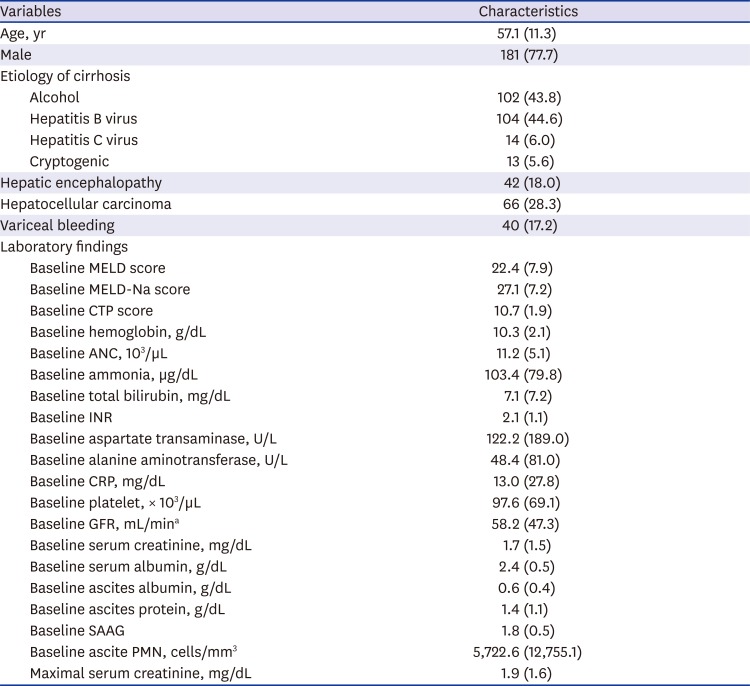
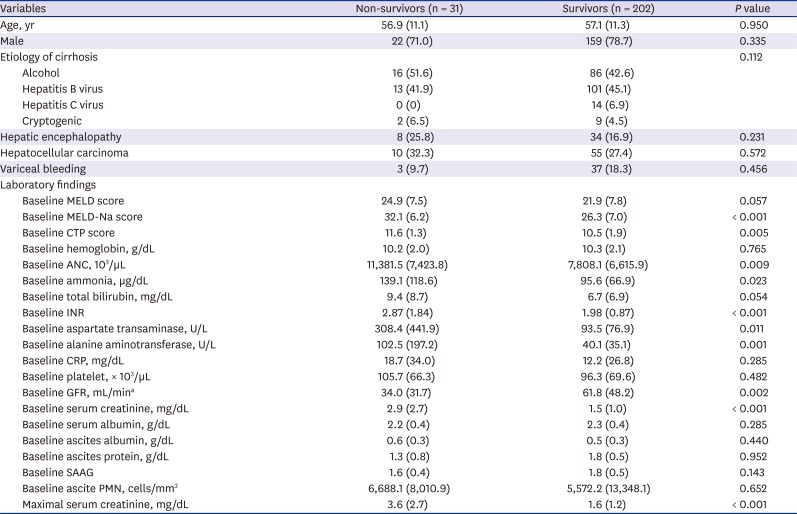


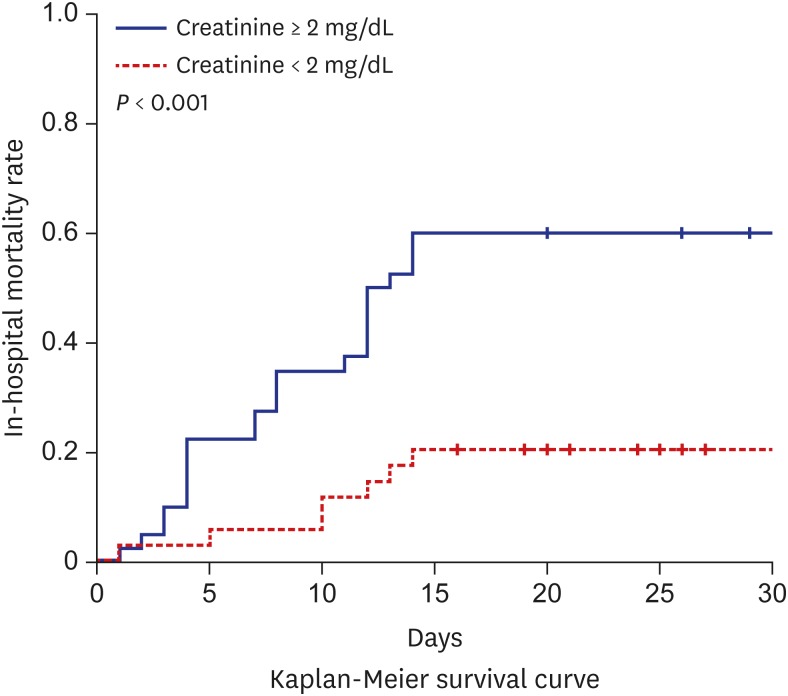




 PDF
PDF Citation
Citation Print
Print



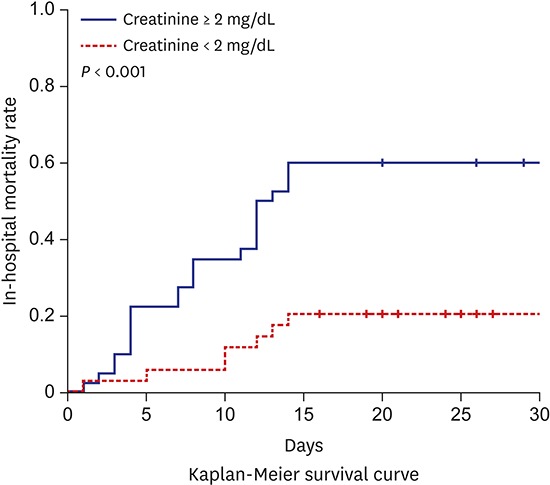
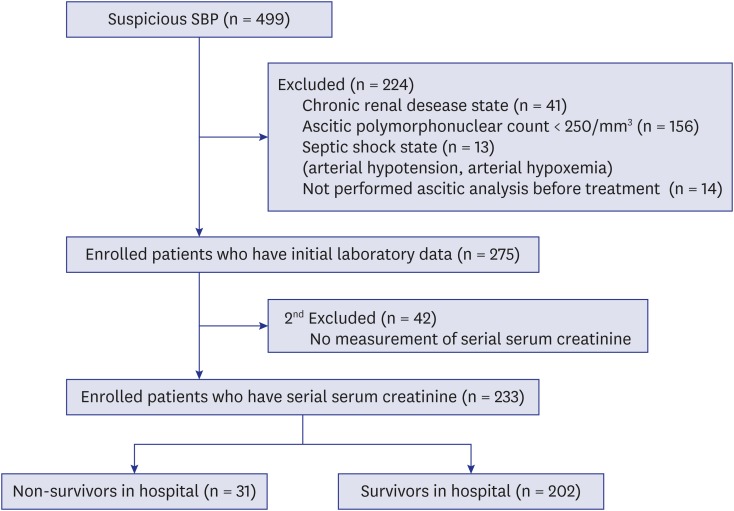


 XML Download
XML Download